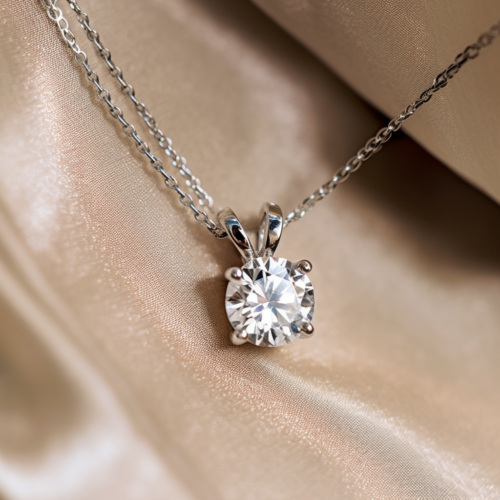
Diamond Clarity
Diamond clarity refers to the absence or presence of internal and external flaws, known as inclusions and blemishes, respectively. In this article, we will explore the importance of diamond clarity and how it can impact your diamond buying experience.
More About Diamond Clarity
The 4 Cs of Diamonds
Diamonds are graded based on four key factors, known as the 4 Cs: cut, color, clarity, and carat weight. Each of these factors plays a role in determining a diamond's value, and it's important to understand how they interact with each other.
Cut refers to the proportions and symmetry of a diamond, and it has a significant impact on its sparkle and brilliance. Color refers to the presence or absence of color in a diamond, and it's an essential factor in determining its value. Carat weight refers to the size of a diamond, and it's often the most important factor for those seeking a statement piece. Finally, clarity refers to the absence or presence of inclusions and blemishes in a diamond, and it's an essential factor in determining its beauty and durability.
The Diamond Clarity Grading Scale
Diamonds are graded on a scale from flawless (FL) to included (I3), with FL being the most valuable and desirable clarity grade. Flawless diamonds have no inclusions or blemishes visible under 10x magnification, while included diamonds have numerous visible inclusions and blemishes that affect their beauty and durability. The clarity grading scale is based on the GIA (Gemological Institute of America) scale, which is recognized as the most objective and accurate grading system in the diamond industry.
Why Diamond Clarity Matters
Diamond clarity is important because it affects a diamond's overall beauty and durability. Inclusions and blemishes can interfere with the way that light travels through a diamond, causing it to appear less brilliant and less valuable. In addition, inclusions can weaken a diamond's structure, making it more prone to damage and breakage.
Choosing the Right Diamond Clarity
When choosing the right diamond clarity, it's important to consider your budget and your personal preferences. If you're looking for a diamond that is completely flawless, you will need to be prepared to pay a premium price. However, keep in mind that even diamonds with lower clarity grades can still be beautiful and valuable if they have a high cut grade and are well-proportioned.
In addition, it's important to consider the type, location, and size of inclusions when evaluating a diamond's clarity grade. Some inclusions, such as feathers and clouds, are less visible and have less impact on a diamond's overall beauty and durability. Others, such as large crystals and knots, can be more visible and affect the way that light travels through a diamond.
Conclusion
Diamond clarity is an essential factor to consider when buying a diamond, and it's an important component of the 4 Cs. A completely flawless diamond will be more rare and valuable, but diamonds with lower clarity grades can still be beautiful and valuable if they are well-cut and proportioned. When choosing the right diamond clarity, it's important to consider your budget, your personal preferences, and the type, location, and size of inclusions in the diamond. With these factors in mind, you can choose a diamond that is both beautiful and durable, and that will bring you joy for years to come.
